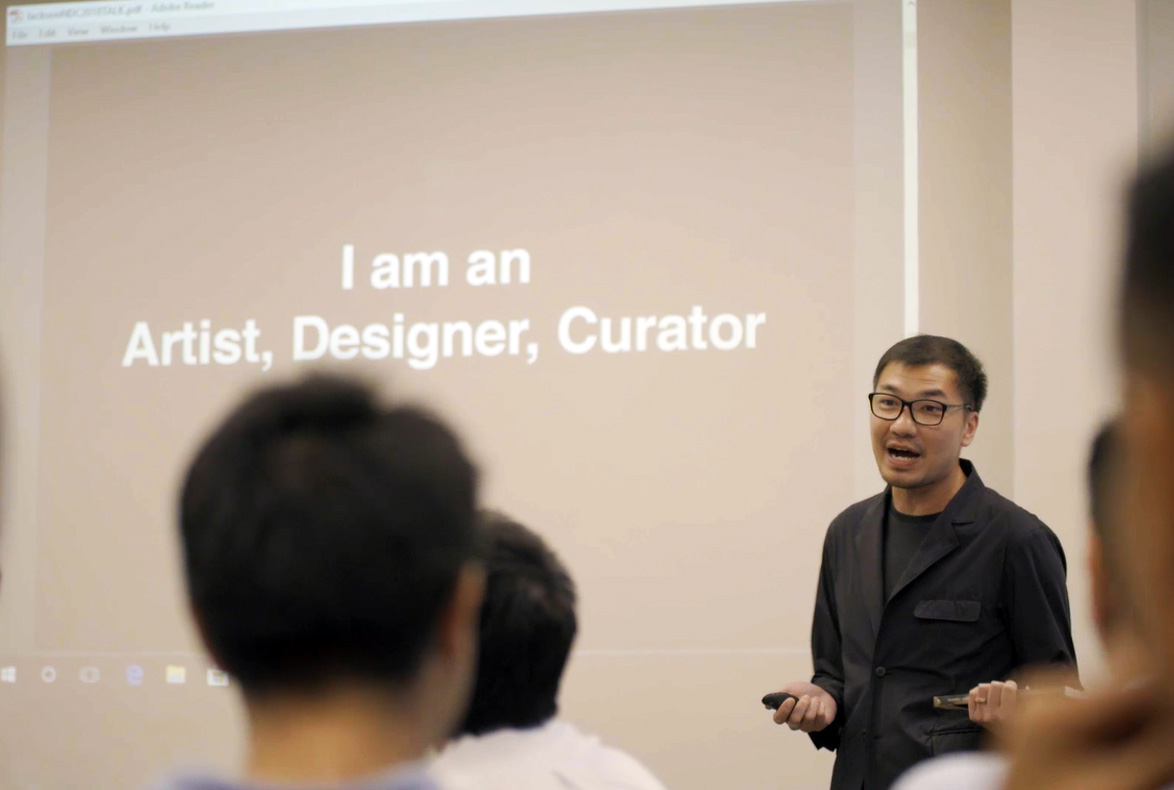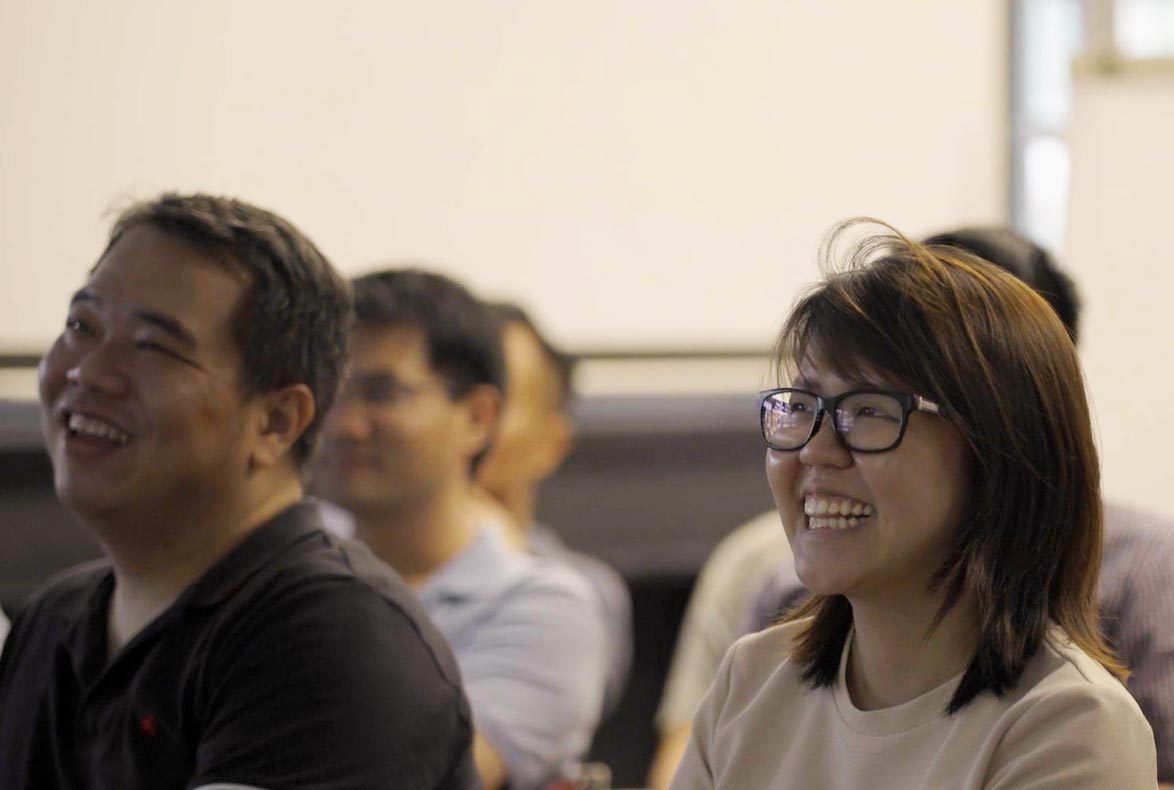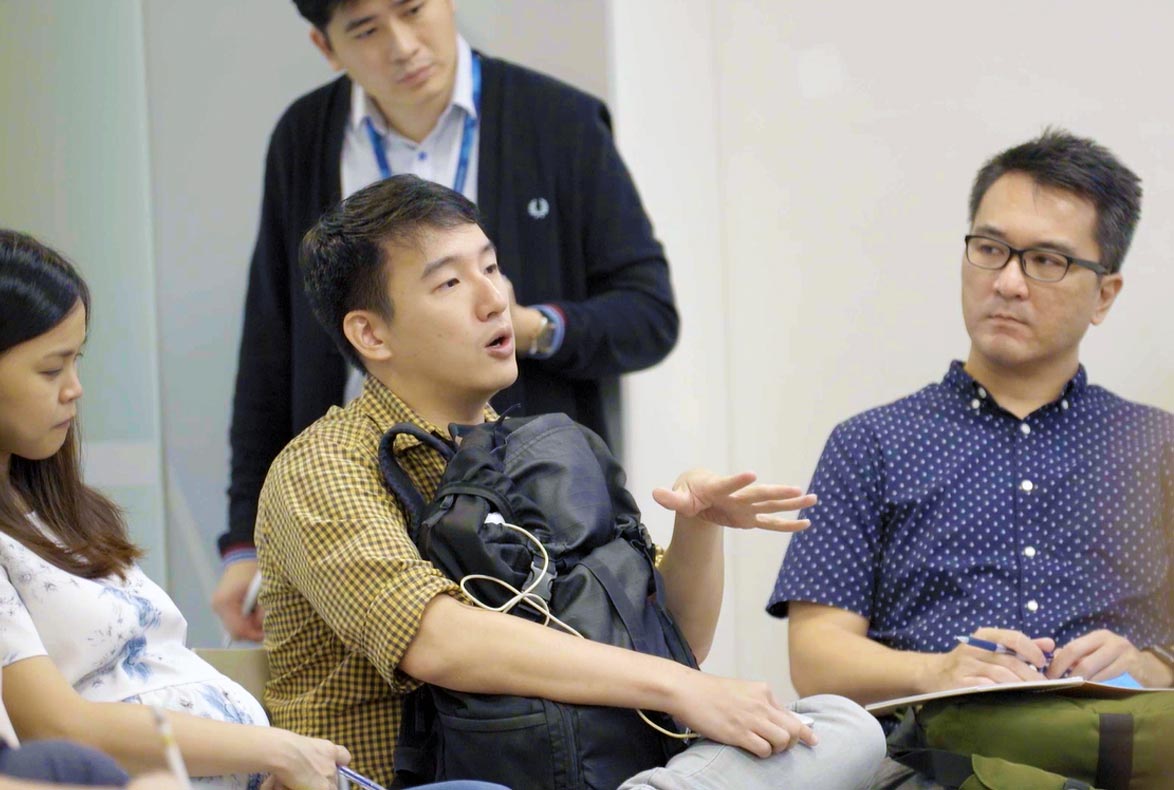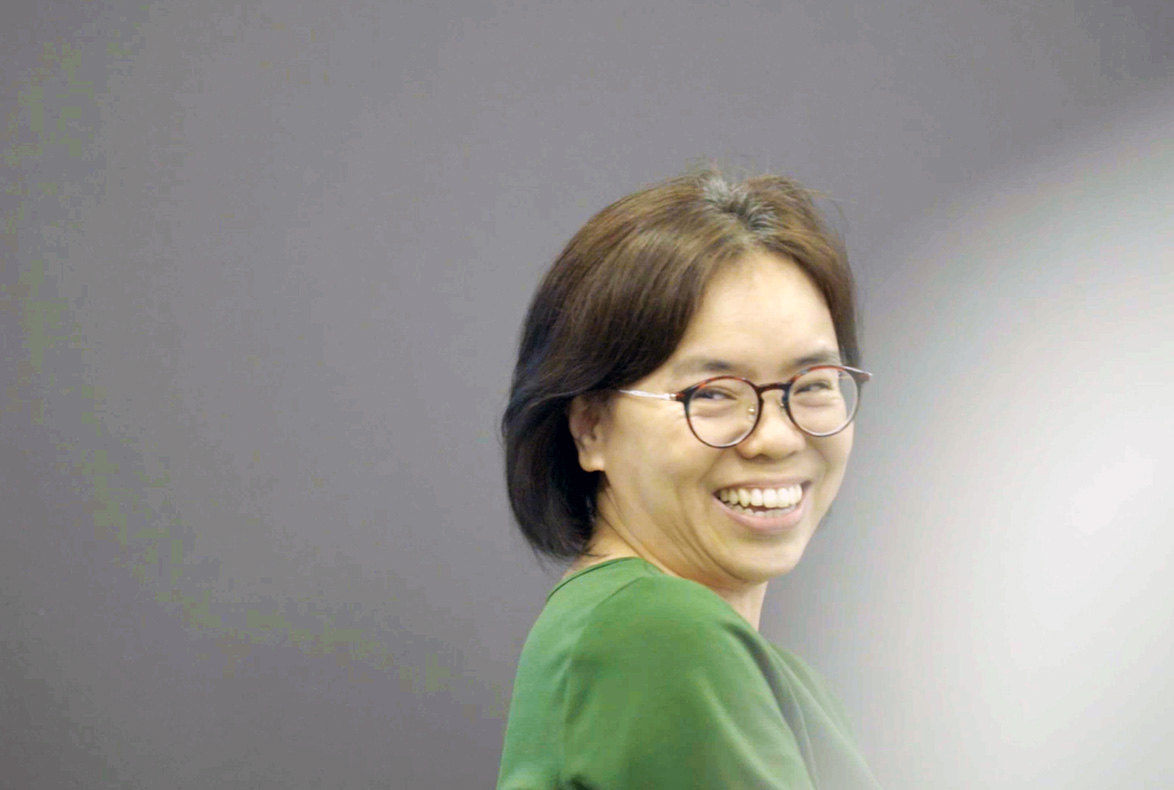P*DA 2018 Masterclass: Design Thinking for Educators with Jackson Tan
Design Thinking is increasingly taught in schools these days as more educators see the benefits of imparting a design thinking mindset to their students. In a nutshell: design thinking is an iterative and collaborative human-centred approach to design and innovation. It is a designer’s way of solving problems by being deeply empathetic.
To give educators more support and to deepen their design thinking capabilities, the DesignSingapore Council (Dsg) launched its first Masterclass on Design Thinking (DT) for Educators in February 2018. This is the first of three masterclasses aimed at creating a networked learning community for educators.
For the pilot class, 22 teachers were invited to share their challenges of implementing DT in schools. The session was facilitated by Jackson Tan, one of Singapore’s design luminaries. The award-winning artist, designer, curator and creative director received the President’s Design Award in 2007 and is a juror for the President*s Design Award 2018. Jackson – the man behind the iconic SG50 design – shared how he co-created user-centred and interactive projects through design thinking. These included the SG Heart Map and the giant inflatables park, Art-Zoo. Jackson also shared advice on how the educators could overcome their challenges in school.
Here are four of the common challenges shared by the teachers.

Challenge 1: Keeping students and parents keen
With homework and co-curricular activities, students have almost no time for anything else. In schools where DT projects continue for more than a year, it gets difficult to push students – and teachers – to press on with finding solutions. How can interest be sustained and supported when parents see no value in design thinking as their children weren’t aiming to become designers?
Jackson’s advice: Teachers can help to educate the parents and students about the life skills that design thinking programmes can help to develop, such as empathy and critical thinking skills. Parents also need to understand that times are changing as design thinking is increasingly applied to other fields.

Challenge 2: Changing peer mindsets
A common difficulty shared was how to change the mindset of peers who simply aren’t convinced of the value of design thinking. One participant put it frankly: “To change the hearts of the kids is not difficult. We are all educators. But to change the heart of the educators, that is something else. (At my school,) we are fortunate to have had industry experts come and speak to the kids. But we need them to also share with the teachers about what is happening outside.”
Jackson’s advice: Keep the momentum going! Design industry leaders like himself are happy to share their experiences and feedback, he said. “It will be awesome if we all keep up the momentum by having follow-up meetings and sharing sessions.”
Bonus tip: One teacher shared that his school has taken a school-wide effort in training in design thinking, by having ground activities, staff retreats, a design challenge and even a rapid prototyping design fund to benefit the school, all with the thumbs up from his school leaders.
Another suggestion was to find a common platform to infuse design thinking across various subjects, such as inculcating the value of empathy in project work.

Challenge 3: Getting comfortable with uncertainty
Students are very used to clear right and wrong answers. But the very nature of DT is to embrace ambiguity so as to consider all possibilities and to embrace rapid testing. This creates discomfort, leading many students to give up on their DT projects halfway. How should teachers help students be more adaptive and encourage them to persevere despite their ‘failures’? How much guidance should be given?
The same can be even be said of teachers. Said one participant: “From my experience in guiding teachers on how to facilitate discussions, they get very uncomfortable and keep coming back to me to check if there are correct answers. But, in fact, there are no correct answers (with design thinking). So how should they step out of their comfort zone?”
Jackson’s advice: Turn the problem on its head. Jackson said: “This whole design thinking process is about iterations, testing and prototyping, and shaping and refining responses along the way. That’s the spirit that we need to imbue in students, the idea that it doesn’t have to be perfect and that you can go a long way in refining it.” Jackson encourages students and teachers not to be fearful of getting answers “wrong”. It’s the rigour of the process that is important, not the final answer.

Challenge 4: Moving beyond the self
One teacher revealed that her school has a design challenge that is popular among students because it counts towards their CCA points. Her dilemma is how to guide them to see design thinking as a meaningful reward for themselves personally and for society, rather than just a way to beef up their CCA record.
For design thinking to take root in schools, it also requires the whole of society, said another participant. He pointed to the success of the city of Detroit in the USA, which has rebuilt itself thanks to ground-up initiatives. “Singaporeans, however, are very fortunate in having the government take care of our needs and solve our problems. So how can we cultivate our own problem-solving abilities?”
Jackson’s advice: Besides getting industry champions to relay these concerns to higher-level committees, Jackson has one solution to get students to understand the value of design thinking. “What we’ve realised as designers in our work is that if you feel strongly about a problem, you will work harder on it. So it’s really trying to get the students to open up to see the things they feel strongly for.” This means to help them find solutions to problems, which may be deeply personal to each student, instead of abstract problems that do not resonate with them.
The Design Thinking masterclass with Jackson Tan was the pilot session in a series for the Design Thinking Networked Learning Community for Educators. Look out for more of these sessions in the weeks ahead! To register, email [email protected].
Words of encouragement
Here are a few of the inspiring lessons that teachers have discovered on their design thinking journey. It might help to boost your morale with your students too!
Focus on the process rather than the outcome.
Design thinking may seem daunting to teachers who have only recently begun teaching it. One teacher, whose school has been implementing design thinking for the last six years, said that paying attention to empathy and the ideation process has helped her school to sustain a stronger interest in the topic. She shared: “We are not so concerned with the outcome. Instead, we are more interested in getting the students to learn about the (design thinking) process. Give it a bit more time; if you focus on the process, it may help.”
Stay positive!
A Design & Technology teacher for 15 years shared that while having supportive school leaders who believe in the importance of design thinking is crucial, keeping a positive mindset is also key. Teachers need to find a way to stay positive, in order to stay driven in driving the movement. Teachers may tap support from their peers from other schools and recognise that they are not alone in this journey.
Things will indeed change.
Another teacher shared that when they first started design thinking in 2011, some teachers had self-doubt but now they are seeing the fruits of their labour, such as seeing students use empathy and self-awareness to look at community issues, such as the elderly and the disabled. “That’s been the greatest reward. Whether they become designers is secondary, but the fact that they have committed themselves to the community from this perspective is heartwarming to me.”
Design thinking in a nutshell
Simply put, design thinking is about coming up with creative solutions that meet people’s needs. The design thinking process tackles a problem by starting with empathy, defining the problem, ideation or thinking of different solutions, picking a solution and prototyping it, and, finally, testing the solution.
Contrary to popular perception, design thinking is not just about designing a beautiful object. By putting the user first, it has resulted in innovative solutions to thorny problems and is often applied across different industries, such as healthcare and business.





